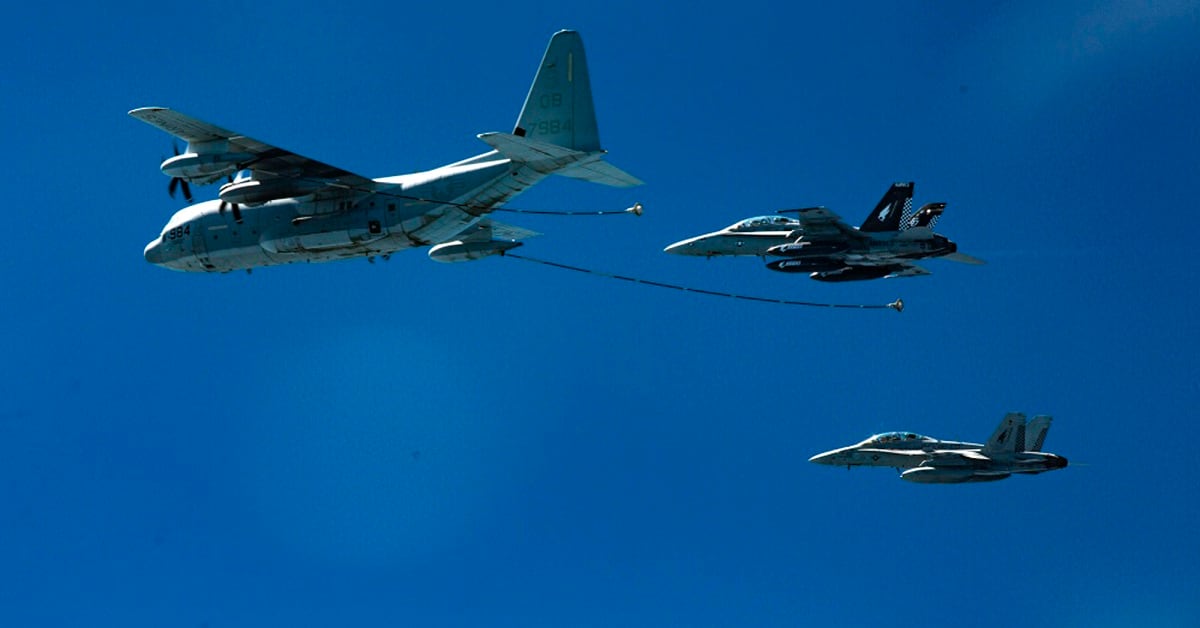The story of the midair collision between an F/A-18D and KC-130J on Dec. 6, 2018, as reported by the Marine Corps Times in September is now out for the entire world to see.
It is, sadly, a damning indictment of the leadership at every level of Marine aviation.
I cannot claim to speak for all who were the leaders of prior years, but I firmly believe this tragedy indicates that the current generation of aviation leaders have failed their Marines. And that, gentlemen, is neither the example nor the lesson those of us who were leaders in prior years passed on.
Before patting yourselves on the back for doing the right thing by relieving the commanding officer, XO, operations officer, and aviation safety officer of Marine All-Weather Fighter Attack Squadron 242, you may want to consider whether that action really solved the problem. You know the answer to that one, a resounding no!
RELATED

For starters, it seems apparent that VMFA-242 was deployed to the 1st Marine Air Wing neither fully trained nor ready to perform its primary mission. Certainly the problems identified in the Times report were long-standing and did not suddenly arise in Iwakuni, Japan. This indicates that the leaders of the squadron’s home group and wing were not properly exercising their responsibility for preparing the squadron for deployment.
Considered in this light, relieving those responsible at the squadron level was necessary but insufficient. What is clearly called for now is a thorough investigation of the relevant commanders and staff officers of the squadron’s home group and wing, with those found culpable, whatever their grade, being summarily relieved and reassigned or retired.
Equally troubling is the fact that concurrent leadership failures at squadron group, and wing level, heretofore unprecedented, imply that Marine aviation has a systemic leadership problem.
If not, why has the quality of leadership apparently declined to a point that permits something like this fiasco to occur in the first place? In VMFA-242’s case, it is obvious that the signs of rot were there to be seen if only someone from the group or wing had gotten up from behind their desk, put on their flight suit, and flown with the squadron. That nobody did suggests that in this wing the administrative was given more command emphasis than the operational. Yet, as any of Marine aviation’s legendary leaders will tell you, you cannot effectively command anything behind a desk!
Though some “house cleaning” may have taken place since the tragedy, it is still critical for leaders at all levels to do some serious soul-searching, viz.
Have we gotten too complacent? Are we living aviation safety? Are we reporting readiness and other matters honestly?
Are we writing honest fitness reports? Are we encouraging subordinates to freely express contrary views or identify embarrassing problems?
Should we take another look at command selection and its long-term effects?
And most importantly, are the most senior leaders of Marine aviation fighting to provide their subordinate commanders with the resources, including adequate flight hours, to properly train and deploy combat ready squadrons?
Until you as a leader can answer those questions with an equally resounding yes, you haven’t begun to lead your Marines ethically.
Respectfully,
Col. Tom Hewes (Retired)
Former CO MAG-26 1979-81




